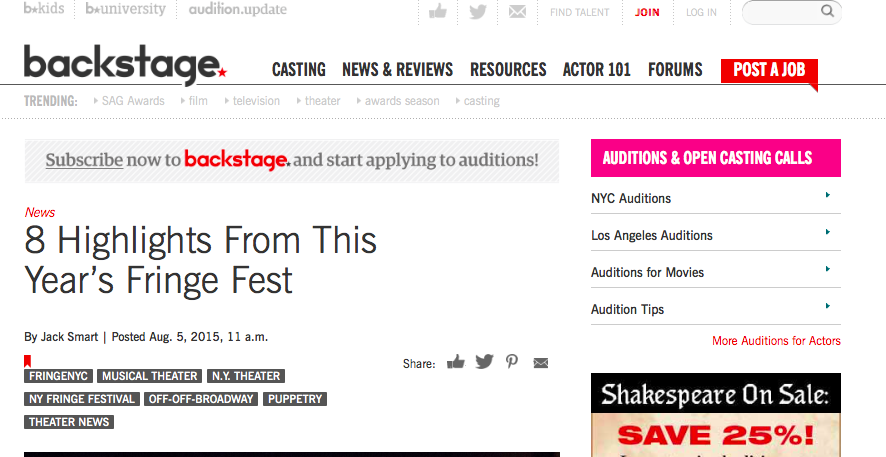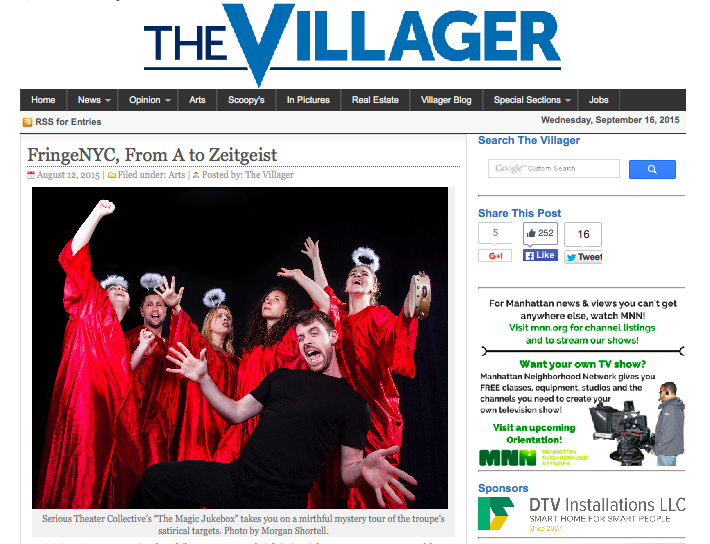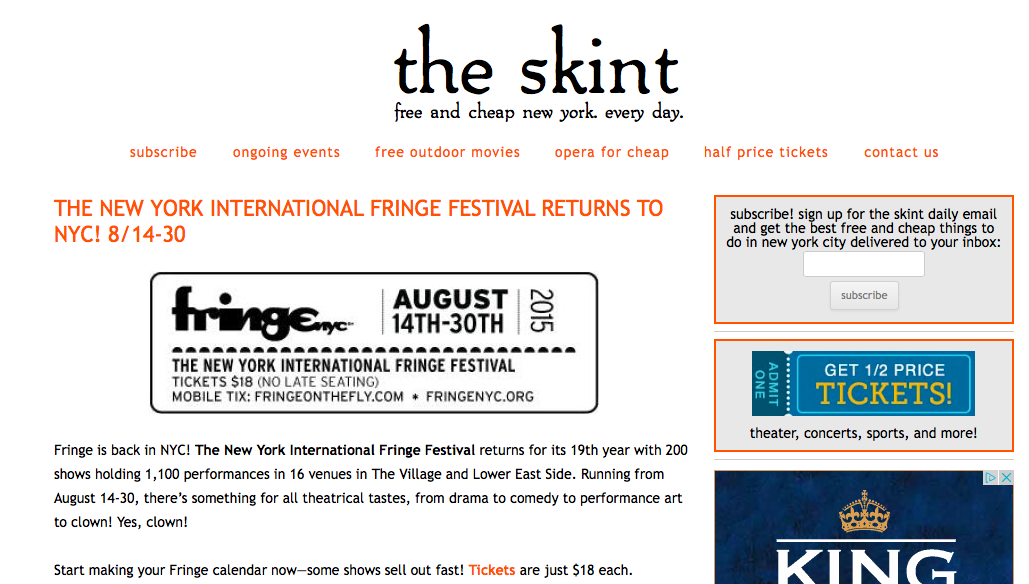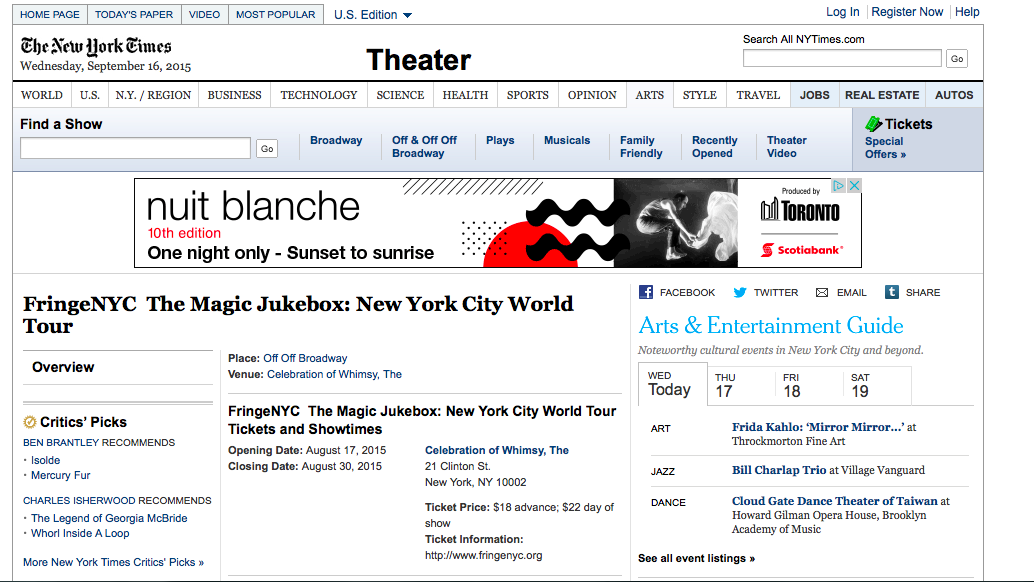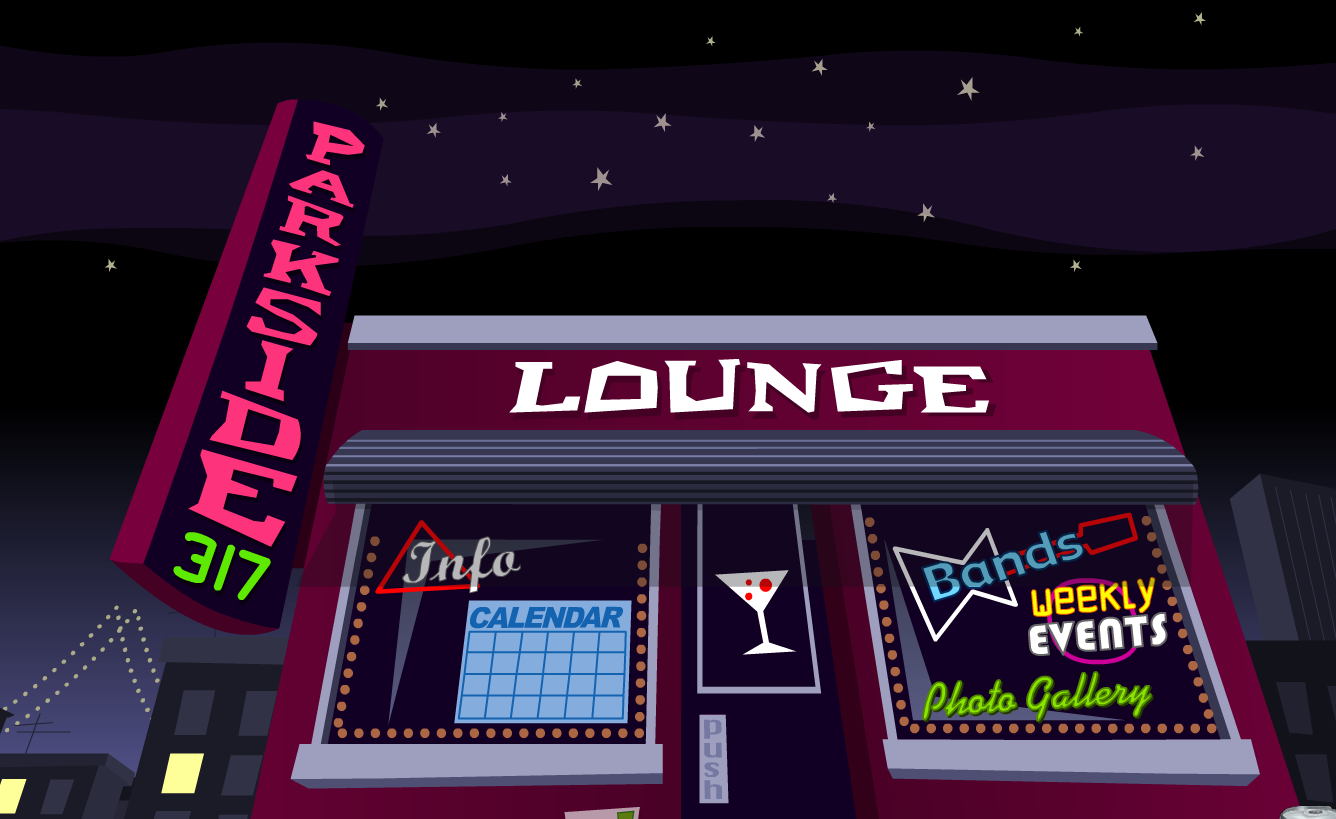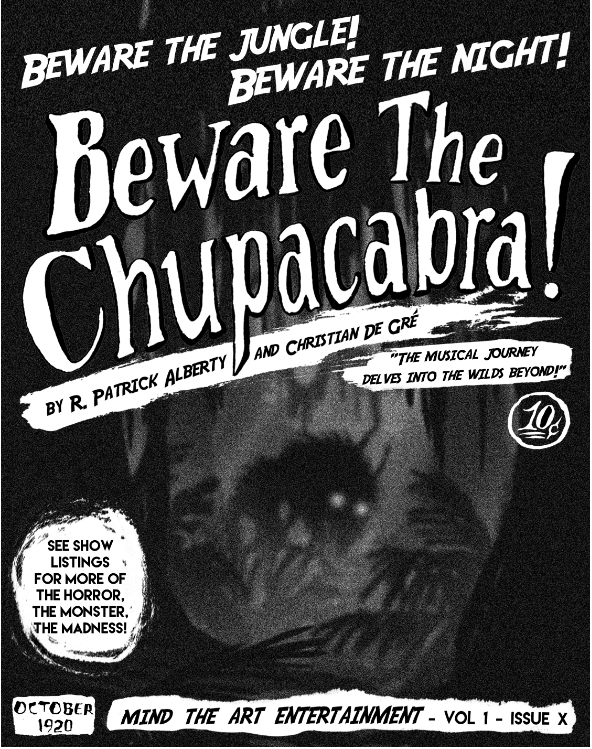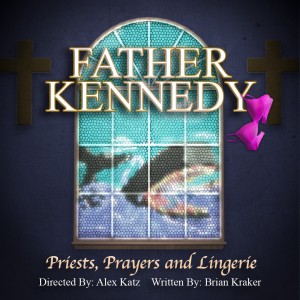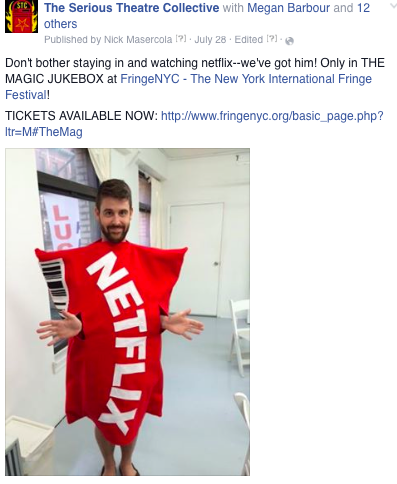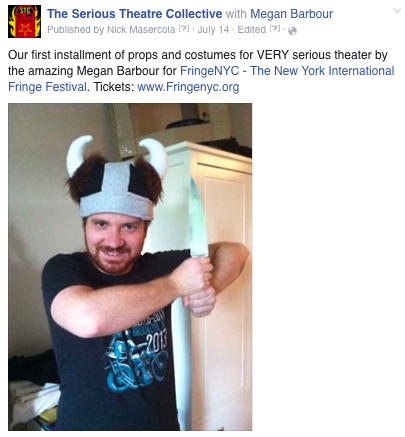The Magic Jukebox: New York City World Tour
Project Overview
In November 2014, I co-wrote and produced a musical-sketch-comedy show that was performed at South Street Seaport through a sponsorship by the Howard Hughes Corporation. At the end of the run, we knew we had a good show that could be iterated on to become even better, and we wanted a bigger stage to showcase it.
We applied to the New York International Fringe Festival, the largest play festival in the U.S, with the hopes of gaining entrance and getting to put on our show in August, and if we did well, getting an extension.
In May, we received an acceptance letter, and suddenly had three months to pull together an entire show and a marketing plan that would bring the company to the next level.
Step 1: Polishing the Script
While we had a solid run at the South Street Seaport ( check out more info on it here), there were definitely sketches we wanted to cut and change around. So in January when we submitted our application, the head writers and I met once a week for a 5 hour writing session to create new material to replace sketches we thought didn't hold up.
In the end, we drastically reworked the show, cutting sketches, adding new ones, changing the order, altering punchlines, and beefing it up to be a shorter, more hilarious experience. Click here for the rehearsal draft.
Step 2: Press Photos and Creative for Marketing
One of the most important factors for getting listed in magazines, newspapers, and websites are the quality of your press photos. No one wants to put up a post about a show that has terrible photos, or worse, none at all. The writing team and I conceptualized not only our press photos, but also content for social media.
We decided that in addition to general press photos, we would also do a series that re-imagined our sketches as album covers (in the show, they are referred to as track 1, 2, etc). This way not only would we have good photos for press, but we'd also have a lot of solid, highly visual content for social media marketing.
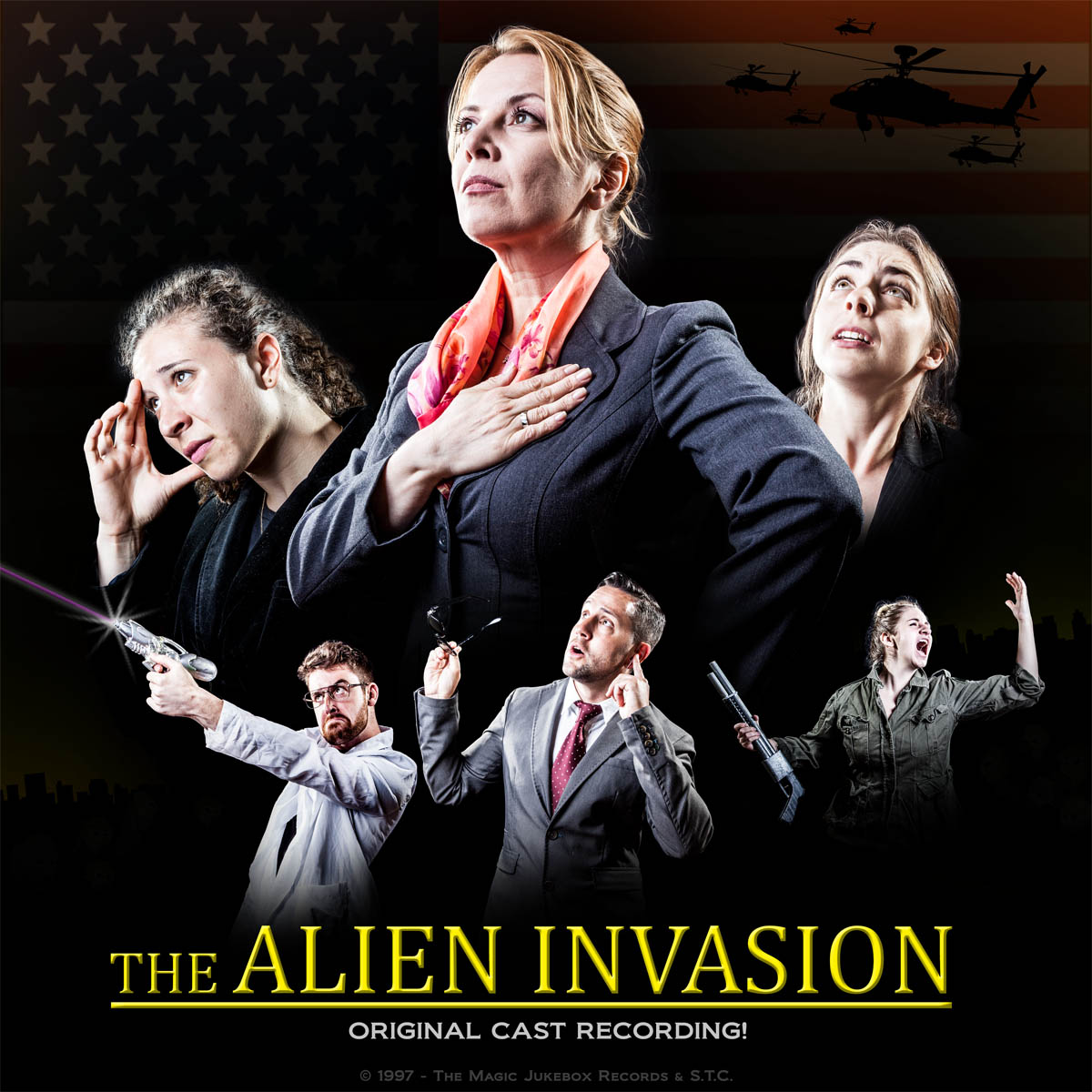
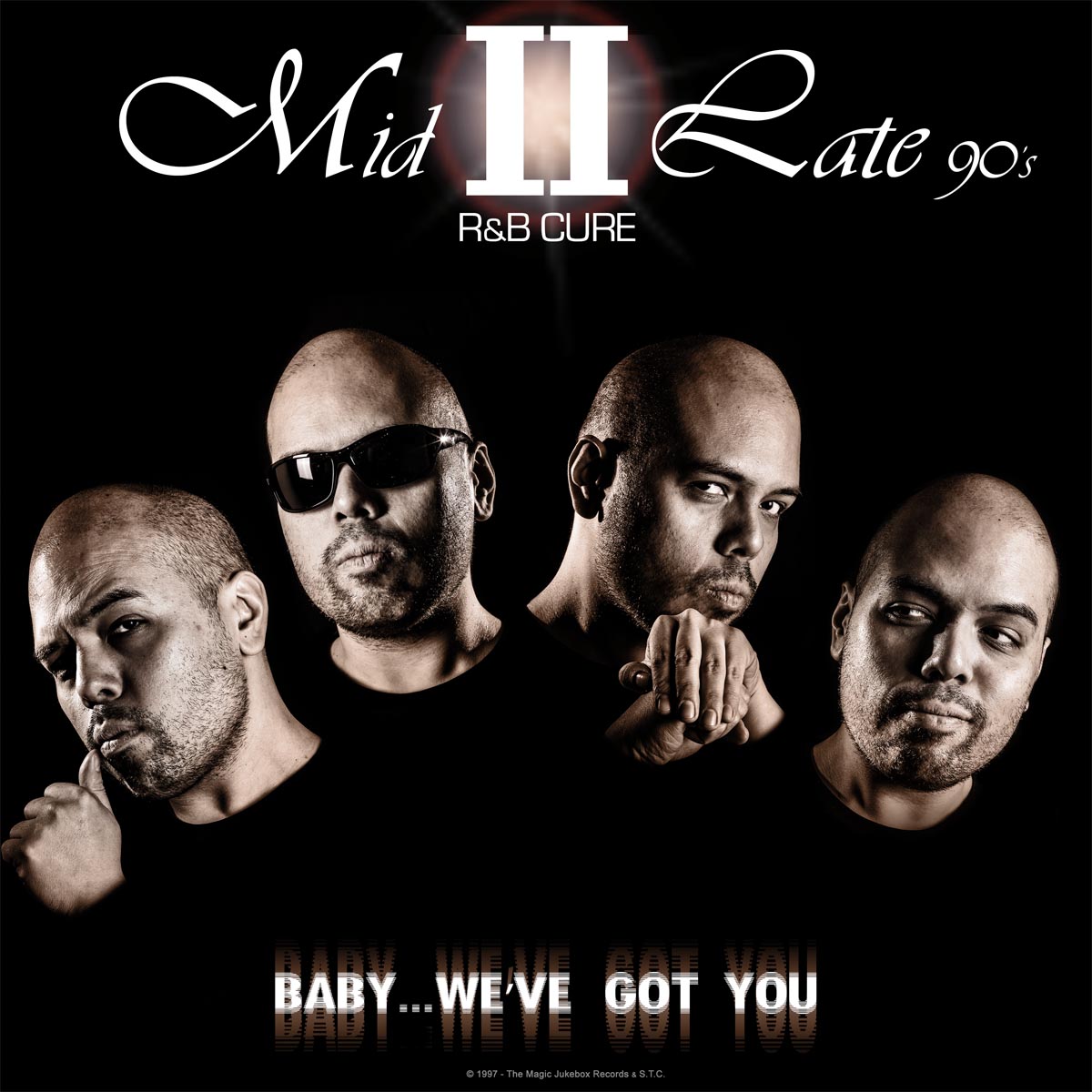
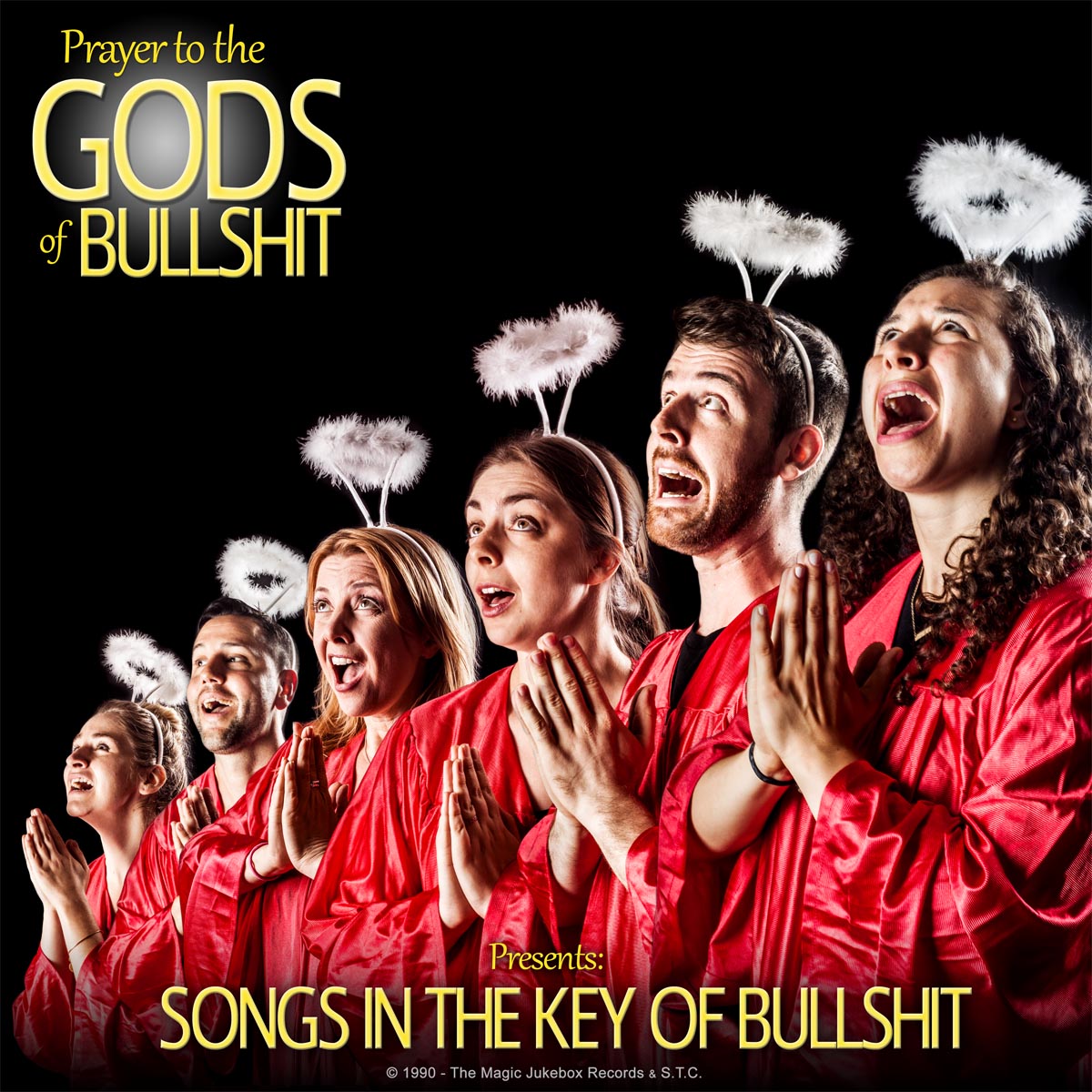
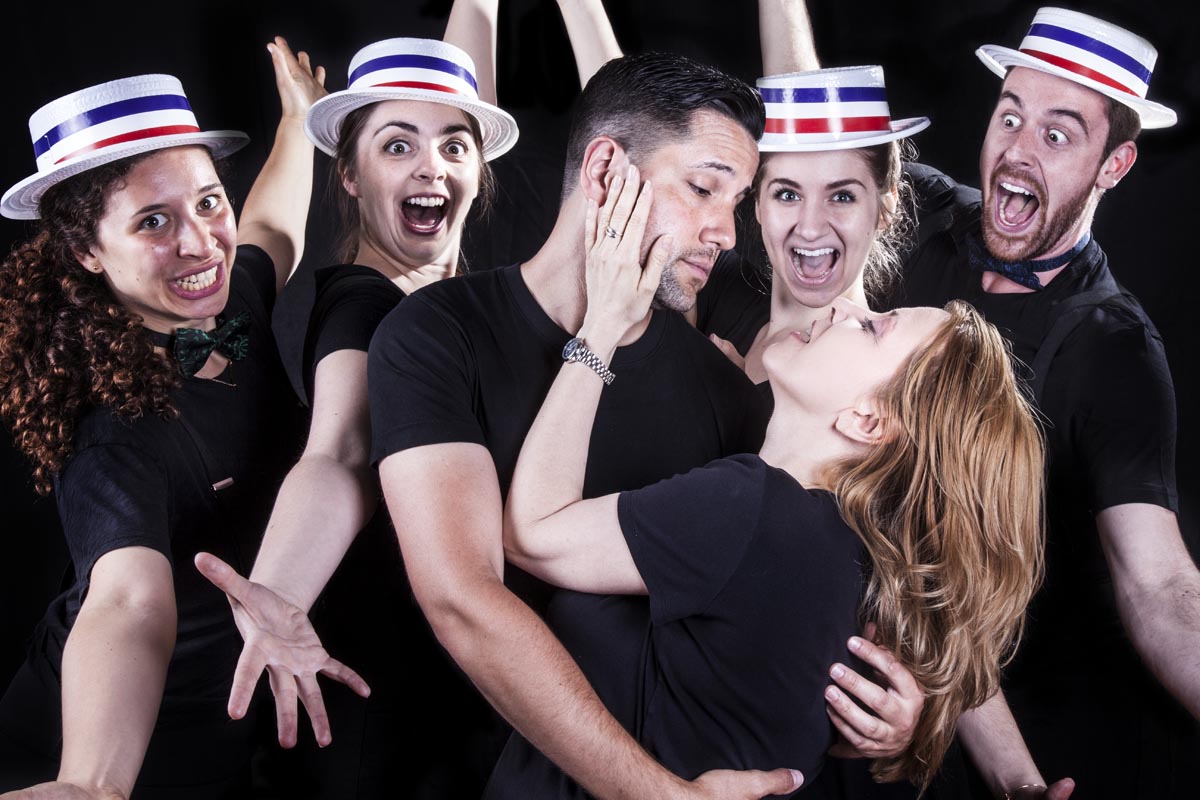
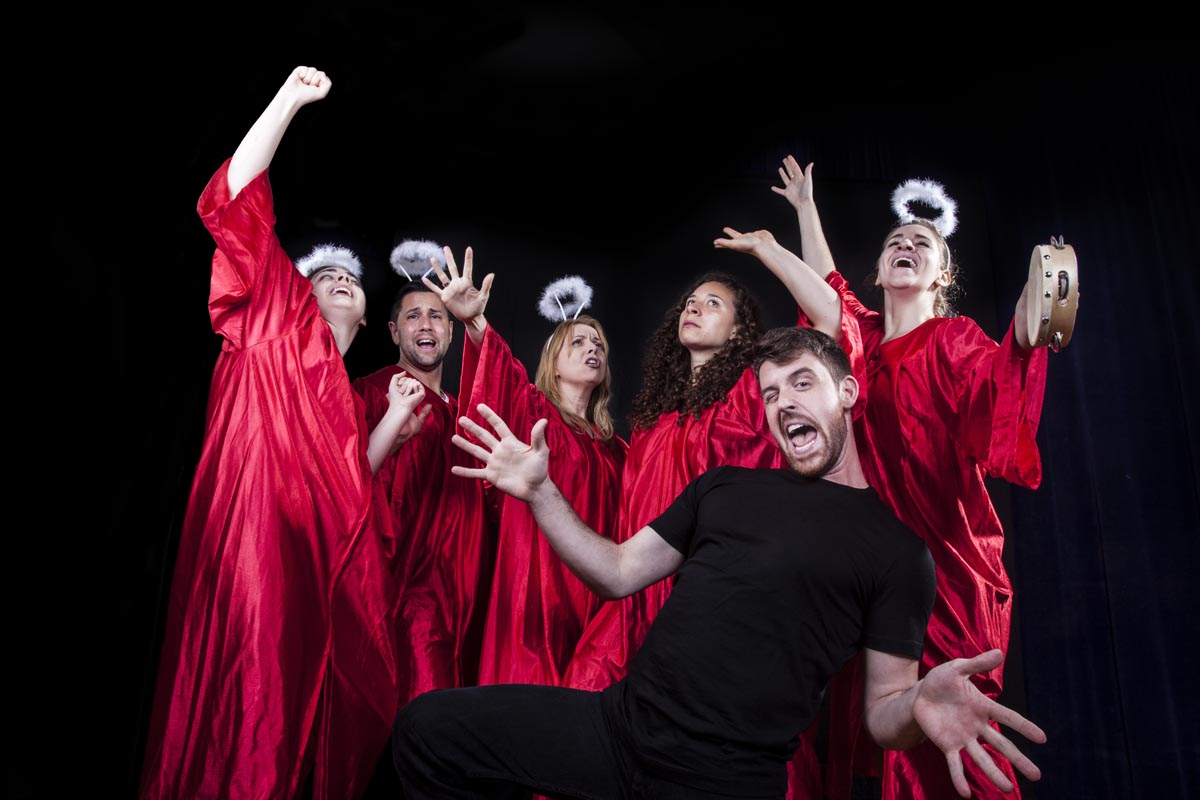

Step 3: Listings
If you want people to come to your show, you need to be listed in local mags. Villiage Voice, TimeOutNY, The Skint, etc., any place where people look for cheap, fun thing to do on the weekend.
While the Fringe helps with promotions, at the end of the today, you're competing against 200 other shows for an audience, and it's very easy to get lost in the shuffle.
To compete, we sent a press release to every major paper, mag, and local entertainment site we could think of in the NYC area that might list us or someone else from the Fringe. You can view it here: Press Release
Next, we pitched ourselves to several outlets in a group "package". Figuring it would be hard to get specific coverage of our show before reviews had come out, we made the gamble that if we pitched ourselves with other wacky comedies, we'd get more people to write about us. On the side are just some of the places we appeared. Click on the buttons to move between clippings, and click on the clippings to see them in full.
Step 4: Partnerships
Now we needed to work on street-level marketing. We printed about 1,000 postcards and several hundred posters for the show, but instead of merely posting them around town or in other theaters,we formed partnerships with others shows and venues where each of us would pass out the others materials.
This was important, as instead of languishing in the entrance of a theater or a bar, they were handed out in programs of other shows, or given out to people buying drinks at businesses around the corner. These partnerships with other shows and establishments helped us get a far greater reach when it came to our limited ability to create flyers. Here are just a few of the shows/venues we partnered with:
Step 5: Social and Email
While social and email is important for activating current fans of your show, it's not particularly helpful for people unfamiliar with it. Theatre tends to rely heavily on word of mouth and solid reviews to generate sales, not general advertising.
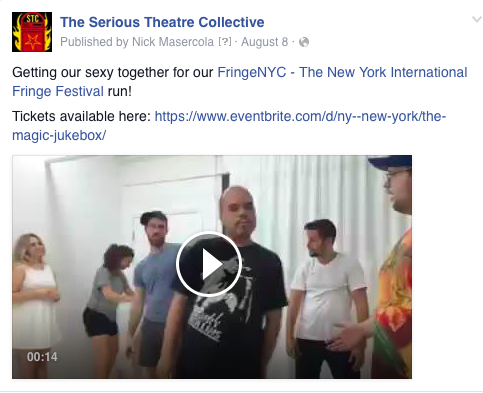
Knowing this, when creating our Twitter and Facebook plans, I made sure to engineer content that FringeNYC would want to promote on their channels, which included lots of the behind the scenes photos of creating the show. In addition, we put several email blasts out to our list of 400 subscribers two weeks, one week, during, and just before the final performance.
You can see examples of posts in the slideshow. Click on the buttons below to view the emails.
This content culminated in a planned video, where we took 1 second of footage everyday from the moment we were accepted all the way to opening night to serve as a nice little taste of what it took to bring something from the page to the stage.
Results
So, how did things wind up?
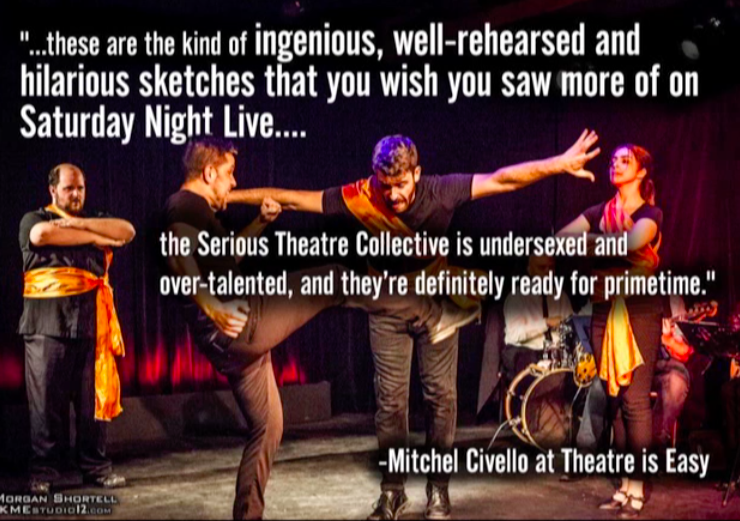
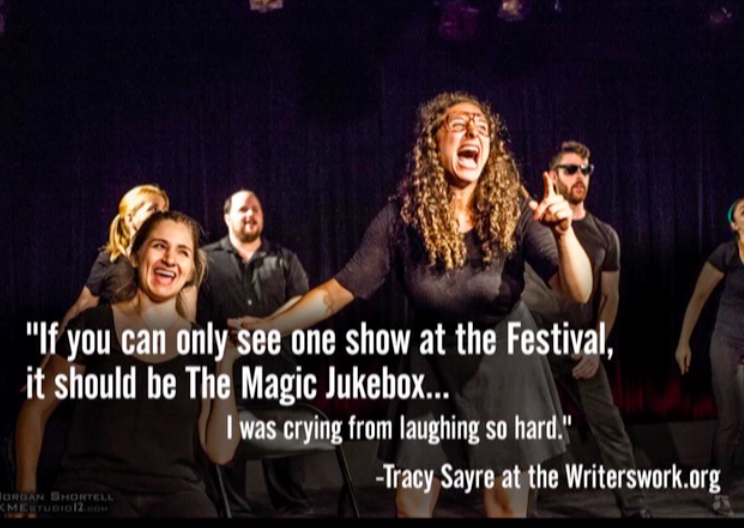
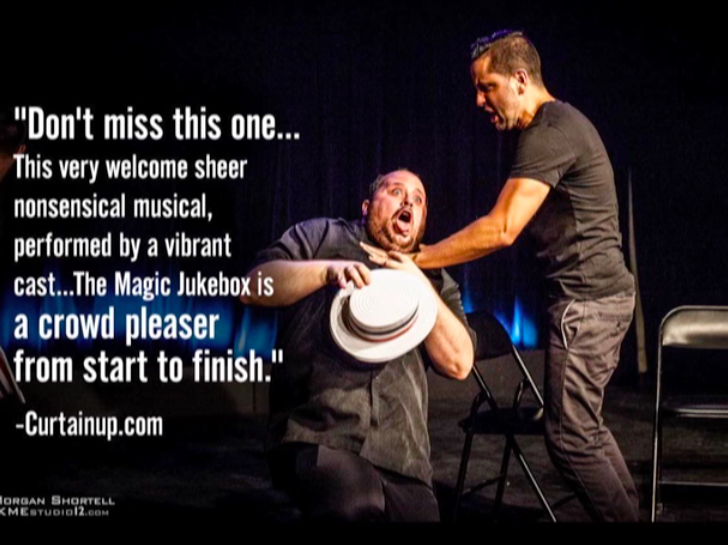
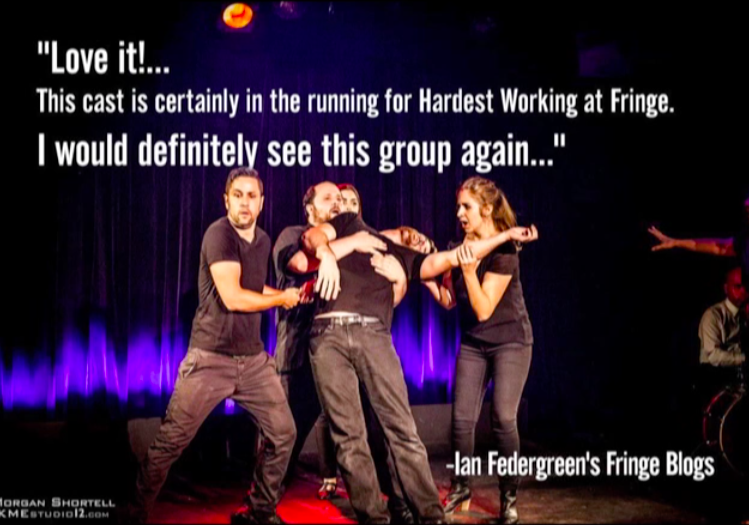
We got RAVE reviews from a variety of publications (click through the pictures to the right for some highlights).
We sold out our shows! Even one that got slotted at 2:45 on a Wednesday afternoon.
We were offered an extension at our venue through September, and upon selling out those shows, acquired an offer for a 3-month run of a new show in 2016!

